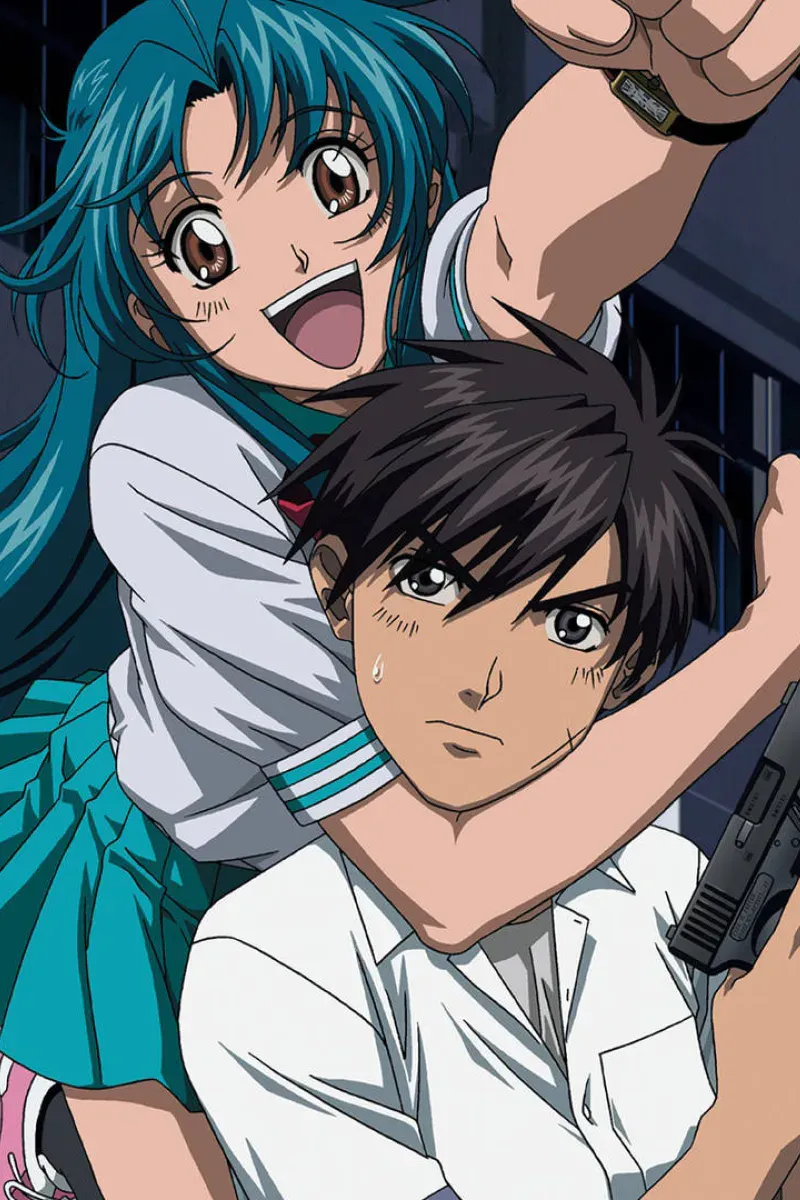
About Full Metal Panic
Full Metal Panic stands as a distinctive voice in the mecha genre, expertly weaving military realism with supernatural technology to create a compelling narrative that balances intense combat with genuine human emotion.
Created by author Gatoh Shoji and illustrated by Shikidouji, this groundbreaking franchise originated as a series of light novels in 1998 before expanding into anime, manga, and model kits that continue to influence military mecha storytelling.
The Full Metal Panic franchise features humanoid combat units called Arm Slaves (Armored Mobile Master-Slave Systems). Unlike traditional giant robots, these mechs are typically 8–10 metres tall and operate through sophisticated pilot-machine interfaces that blur the line between human reflexes and mechanical precision.
Full Metal Panic! is the original series that established the franchise’s core themes. Set in an alternate history where the Cold War never ended and advanced military technology exists alongside conventional warfare, the story follows Sousuke Sagara, a member of the anti-terrorist organisation Mithril, as he protects Kaname Chidori, a high school student with mysterious abilities.
The franchise has expanded through multiple seasons, including Full Metal Panic? Fumoffu, Full Metal Panic! The Second Raid, and Full Metal Panic! Invisible Victory, each exploring different aspects of the series’ unique tonal balance between military action and slice-of-life comedy.
History of Full Metal Panic
In 1998, Gatoh Shoji introduced a military mecha series that would challenge conventional expectations of the genre. Full Metal Panic! premiered as a light novel series published by Fujimi Shobo under their Fujimi Fantasia Bunko imprint. Gatoh worked closely with illustrator Shikidouji to develop a visual style that balanced realistic military aesthetics with distinctive character designs.
The franchise’s anime adaptation began in 2002, produced by Gonzo Digimation, though its original air date was delayed due to the September 11 attacks. This first season established the series’ signature approach of combining serious military scenarios with moments of unexpected comedy, particularly through Sousuke’s fish-out-of-water experiences in civilian life.
The franchise expanded with Full Metal Panic? Fumoffu in 2003, focusing primarily on the comedic elements of Sousuke’s school life, followed by Full Metal Panic! The Second Raid in 2005. After a thirteen-year hiatus, the series returned with Full Metal Panic! Invisible Victory in 2018, produced by Xebec studio.
The franchise’s longevity reflects its unique position in the mecha landscape, offering both sophisticated military tactics and accessible character-driven storytelling that appeals to diverse audiences.
Technology and innovation
Full Metal Panic distinguishes itself through its concept of “Black Technology”—advanced scientific achievements that shouldn’t exist in the series’ timeframe. This technology originates from an experiment gone wrong in 1981 that blanketed the world in mysterious tau waves, creating individuals called “the Whispered” who can perceive advanced technologies from the future.
Arm Slaves represent the pinnacle of this technological advancement, featuring sophisticated “Muscle Packages”—electroactive polymers that provide silent, high-power mechanical motion similar to biological muscles. These innovations allow Arm Slaves to perform with agility and precision that exceeds traditional mechanical systems.
The most extraordinary Black Technology is the Lambda Driver, a device that converts willpower and emotional intensity into physical force, capable of creating invisible barriers, enhancing strength, and defying conventional physics through what the series terms “false axis repulsive field generation”. Units like the ARX-7 Arbalest, piloted by Sousuke Sagara, showcase how this technology creates a symbiotic relationship between pilot psychology and mechanical capability.
Realism within fantasy
Unlike many mecha series that focus primarily on giant robots, Full Metal Panic presents mechs as just one component of comprehensive military operations. Fighter jets, transport aircraft, battleships, and conventional tactics remain equally important, creating a more realistic military environment where Arm Slaves supplement rather than replace traditional warfare.
Gatoh Shoji deliberately avoided creating helpless characters, particularly in designing Kaname Chidori as a strong female protagonist who actively supports and motivates Sousuke rather than merely requiring protection. This approach reflects the series’ broader commitment to realistic character development within its fantastical setting.
The franchise’s technical attention to detail, from weapon specifications to military procedures, provides a foundation of authenticity that makes its more extraordinary elements believable and engaging.
Cultural impact
2018 marked the twentieth anniversary of Full Metal Panic, demonstrating the franchise’s enduring appeal across multiple generations of fans. The series has maintained relevance through its sophisticated exploration of themes rarely addressed in mecha anime, including post-traumatic stress, the psychology of child soldiers, and the challenge of transitioning from military to civilian life.
The franchise continues to evolve with Full Metal Panic! Family, a novel sequel set twenty years after the original series that focuses on Sousuke and Kaname as adults with children of their own. This continuation allows the series to explore new themes of family, legacy, and the long-term consequences of the conflicts depicted in the original works.
The influence of Full Metal Panic extends beyond anime into model kit production, with companies like Bandai creating detailed reproductions of the series’ distinctive mech designs that showcase both the visual appeal and technical complexity of Arm Slave technology.
Legacy and evolution
Full Metal Panic established new standards for integrating realistic military elements with supernatural mecha technology. Its approach to balancing serious themes with genuine humour has influenced subsequent series in the military mecha subgenre.
The franchise’s creators have acknowledged how their perspectives have evolved over the decades, with Gatoh noting that becoming a parent changed his approach to depicting violence and conflict, leading to more nuanced storytelling in later works.
The series’ technical innovations, particularly its depiction of human-machine interfaces and the psychological aspects of mecha piloting, continue to influence contemporary mecha design and storytelling. Full Metal Panic remains a touchstone for creators seeking to combine technological speculation with authentic emotional depth.
Through its unique blend of military authenticity, technological imagination, and character-driven storytelling, Full Metal Panic has secured its position as one of the most distinctive and influential franchises in modern mecha anime.